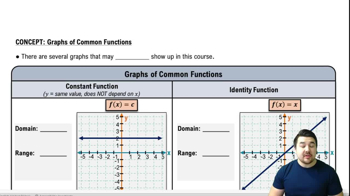Textbook Question
For each function, find (a) ƒ(2) and (b) ƒ(-1). See Example 7.ƒ = {(2, 5), (3, 9), (-1, 11), (5, 3)}
421
views
 Verified step by step guidance
Verified step by step guidance Verified video answer for a similar problem:
Verified video answer for a similar problem:



 5:2m
5:2mMaster Introduction to Relations and Functions with a bite sized video explanation from Patrick
Start learning